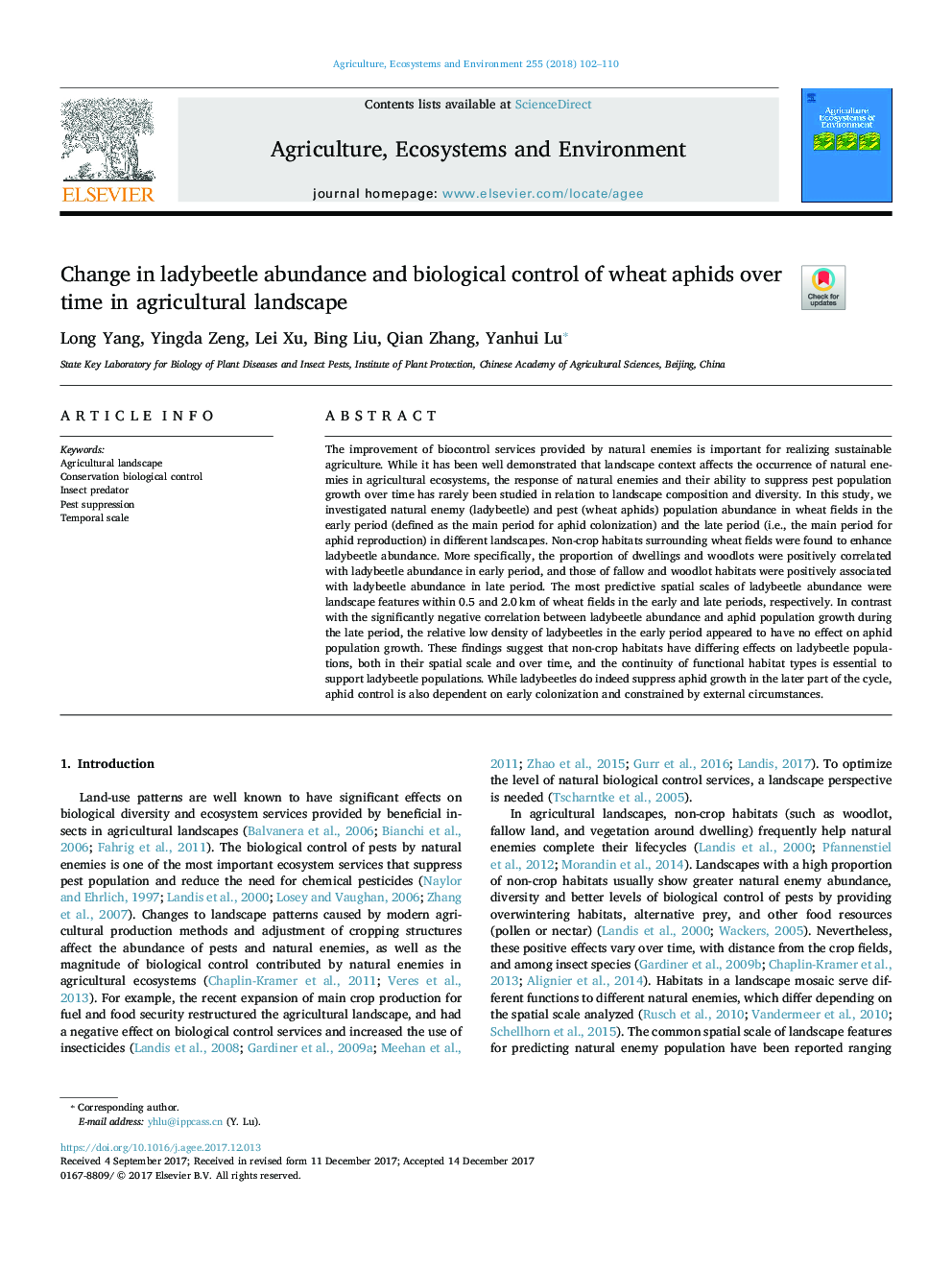| Article ID | Journal | Published Year | Pages | File Type |
|---|---|---|---|---|
| 8487191 | Agriculture, Ecosystems & Environment | 2018 | 9 Pages |
Abstract
The improvement of biocontrol services provided by natural enemies is important for realizing sustainable agriculture. While it has been well demonstrated that landscape context affects the occurrence of natural enemies in agricultural ecosystems, the response of natural enemies and their ability to suppress pest population growth over time has rarely been studied in relation to landscape composition and diversity. In this study, we investigated natural enemy (ladybeetle) and pest (wheat aphids) population abundance in wheat fields in the early period (defined as the main period for aphid colonization) and the late period (i.e., the main period for aphid reproduction) in different landscapes. Non-crop habitats surrounding wheat fields were found to enhance ladybeetle abundance. More specifically, the proportion of dwellings and woodlots were positively correlated with ladybeetle abundance in early period, and those of fallow and woodlot habitats were positively associated with ladybeetle abundance in late period. The most predictive spatial scales of ladybeetle abundance were landscape features within 0.5 and 2.0â¯km of wheat fields in the early and late periods, respectively. In contrast with the significantly negative correlation between ladybeetle abundance and aphid population growth during the late period, the relative low density of ladybeetles in the early period appeared to have no effect on aphid population growth. These findings suggest that non-crop habitats have differing effects on ladybeetle populations, both in their spatial scale and over time, and the continuity of functional habitat types is essential to support ladybeetle populations. While ladybeetles do indeed suppress aphid growth in the later part of the cycle, aphid control is also dependent on early colonization and constrained by external circumstances.
Related Topics
Life Sciences
Agricultural and Biological Sciences
Agronomy and Crop Science
Authors
Long Yang, Yingda Zeng, Lei Xu, Bing Liu, Qian Zhang, Yanhui Lu,
